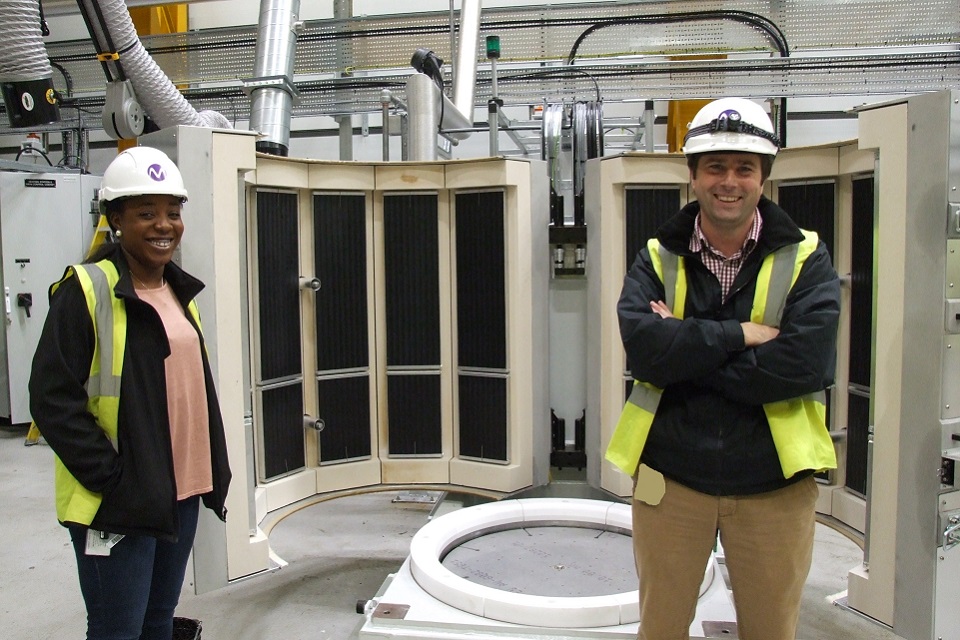Policy paper: Shoreham Adur tidal walls scheme: footpath closures
Updated: Links to public footpath closure notices added.
Details of where there have been temporary footpath diversions during construction.
Updated: Links to public footpath closure notices added.
Details of where there have been temporary footpath diversions during construction.
Updated: Minor details changed
A full programme of past and future events happening in Shoreham.
Updated: DSA01.2 chapter 4: management of health, safety & environmental protection risk has been published at version 1
DSA01.2 supports DSA01.1 (the amplification of the Secretary of State’s policy statement for health, safety and environmental protection (HS&EP)) and provides the detail on how to comply with DSA01.1.
It will be comprised of 10 chapters covering duty holding, safety culture, assessment on organisational change through to service inquiries. These chapters will be published in due course.
TSP Engineeering Ltd and Cavendish Nuclear will supply containers for decommissioning the Magnox Swarf Storage Silo (MSSS).
The 50-tonne containers will be used to move radioactive material from the MSSS to newly constructed treatment and storage facilities on the site.
Built in the 1960s, the MSSS is made up of 22 compartments – each big enough to fit 6 double decker buses inside – which store waste from the UK’s first generation of nuclear power stations.
It was originally constructed without plans for how the waste would eventually be taken out. Now, more than half a century later, the building is no longer suitable for storing the waste long-term.
TSP Engineeering Ltd and Cavendish Nuclear will supply the containers, which will be manufactured using UK-sourced steel.
A total of 15 of the shielded transport packages will help to finally decommission and clean up the MSSS which is one of the Nuclear Decommissioning Authority’s (NDA) highest priority projects.
In the first stage of the project, worth approximately £3 million to each company, both firms will manufacture a single package for testing.
Martin Chown, Sellafield Ltd’s Supply Chain Director, said:
At Sellafield, we are dedicated to cleaning up our legacy facilities as safely, quickly and cost-effectively as possible.
At the same time, we want to make sure our local communities, and the UK as a whole, experience the social and economic benefits of all our procurements.
I’m delighted that the contract has gone to 2 UK-based companies. The fact that one is based close to our site in West Cumbria shows the strength of the nuclear supply chain in the region.
Ron Gorham, Head of Supply Chain for the NDA, said:
This agreement marks an important step forward, not just for Sellafield as it begins to clean out one of its most hazardous facilities, but also in underlining the important contribution of the supply chain both locally and for the UK.
Three machines are currently being constructed above the compartments which will move along the building clearing out the waste – it will then be transferred to new buildings at Sellafield for treatment and interim storage, ahead of final disposal in a UK Geological Disposal Facility.
As much as 99 per cent of moisture is removed from intermediate level waste (ILW) through the Advanced Vacuum Drying System (AVDS), reducing volume and cutting the cost of storing the material.
AVDS was first used at the Berkeley nuclear site, Gloucestershire, in 2013, to tackle radioactive sludge, resin and other waste generated while the site was producing electricity and in the early stages of decommissioning.
AVDS proved such a success at Berkeley that it was dispatched to Bradwell, in Essex, where it was put to work helping to manage the site’s radioactive waste inventory.
To date, the Bradwell plant has processed 85 different packages of waste.
The experience gained from using AVDS at other sites means that it could be built, installed and commissioned at Dungeness A in just 10 months – 30 per cent quicker than at Bradwell.
AVDS uses a heating, vacuuming and refrigeration process and can be applied to waste that has already been placed in containers for storage. Drier waste is far more suitable for long-term storage because it presents fewer corrosion and gas generation issues for the container.
Developed as a joint project by Magnox Ltd and MechaTech Systems, an SME based near Bristol, the process was highly commended by the NDA’s supply chain awards in 2014 and also won a Magnox innovation award.
Compared to the conventional approach of encapsulating ILW in cement, AVDS also reduces the time it takes to treat ILW before it can be stored.

Steve Batchelor, Programme Delivery Manager at Dungeness A site, said:
AVDS offers us a safe, efficient and low-cost solution to treating Dungeness A’s ILW.
The whole process of building, installing and commissioning the AVDS has been recorded and made available as a time-lapse sequence.
Time lapse video of Advanced Vacuum Drying System (AVDS) Dungeness A